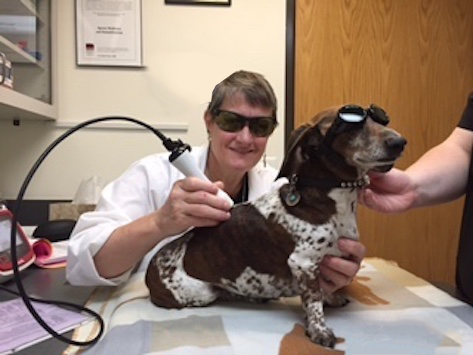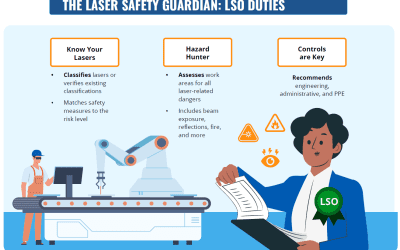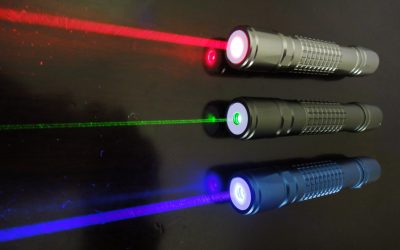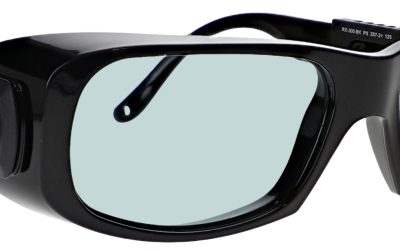Is There Laser Therapy Available For My Dog?
New non-invasive laser therapies are being used for our pets. Often called red-light therapy, cold laser therapy, low-level laser therapy or photobiomodulation, these treatments are being used more and more to treat dogs with arthritis, tendon or soft tissue injuries and to promote wound healing.
Photobiomodulation is a noninvasive procedure that uses light to stimulate cell regeneration and increase blood circulation. Cold laser therapy treats the surface of the skin, while hot laser treatments affect deeper tissues.
How Do Therapeutic Lasers Work?
As the Ask the American Animal Hospital Association (AAHA) article archive explains: “Therapeutic lasers use light waves of a specific wavelength to cause photobiomodulation, or the alteration of cellular and tissue physiology. Light absorbed by cellular components stimulates electrons and activates cells to promote growth, proliferation, migration, and repair.” [1]
Is laser therapy a medical procedure? It depends on the class of laser. There are medical devices that are not available to anyone except a doctor, such as the Class IV products from Erchonia [4] or Aspen Laser [3] that are used for low-level laser therapy. The equipment is expensive, so you have to decide you are going to work with this therapy for the long haul.
The use of lasers for this type of therapy was used 40 years ago on humans before it was ever tried on dogs. This is Ironic, since a number of consumer products are still tested on animals first before they are approved or prescribed for individuals.
In a typical treatment session, the laser wand is applied to the area to be treated. Depending on the area and the energy being delivered, it can take up to 10 to 20 minutes.
A PetMd article explains how low-level laser therapy works: “Therapeutic laser therapy uses light energy, which is cold or low-level, to work its ‘magic.’ Light used at specific frequencies causes a physiological change at the cellular level… These changes can include replenishing adenosine triphosphate (ATP, the molecule that carries energy in the cells of every living being), reducing inflammation and decreasing pain transmission. While the exact method of action for laser therapy has not yet been identified, it is thought that, in essence, it provides a “jump start” to the cells needed for healing and other body processes.” [2]
Laser Therapy Benefits
The same PetMd article [2] also summarized many of the laser therapy benefits for tissue repair via:
- Endorphin release
- Vasodilation, which increases blood flow to bring in oxygen and cells involved in the healing process
- Muscle relaxation
- Decreased inflammation
- Faster healing and repair
And, the good news about laser therapy for dogs is there’s no need to shave or clip the area to be treated and the dog doesn’t need to be sedated during the process. That means that treatment can be applied multiple times a day or a number of times per week.
Before treatment begins, the dog will be given a full physical along with X-rays if needed. If you have a dog with arthritis, you can expect to start laser treatment with two to three sessions per week, then decrease sessions to once a week, then once every two weeks.
After laser therapy, dog owners might see their dog go upstairs more often, play with a ball he’s not picked up in months or go back to getting on the couch for his nightly snuggle with family members. And, when dogs have better mobility, medications can often be reduced.
Laser therapy won’t cause a dog any unwanted side effects. The laser used for this type of treatment will not burn a dog’s skin.
The AAHA article [1] also summarized many common issues that laser therapy for dogs can assist with:
- Surgical wound healing
- Traumatic wound healing
- Increasing the metabolism of specific tissues
- Reducing the formation of scar tissue
- Immunoregulation
- Improving nerve function and nerve regeneration
- Releasing of painful trigger points
- Speeding the healing of infections
Not all veterinary practices have the facilities to offer laser treatment for your dog, as the laser equipment can be exceptionally pricey. Laser therapy treatment is becoming more popular. With increased popularity, the equipment should become more affordable and then more widely available.
Laser therapy improves the quality of a dog’s life as well as the life of its owner, because if your dog is happy, you are happy.
References
[1] American Animal Hospital Association (AAHA), What is Veterinary Laser Therapy: https://www.aaha.org/your-pet/pet-owner-education/ask-aaha/laser-therapy/
[2] PetMD, Laser Therapy for Dogs: https://www.petmd.com/dog/care/laser-therapy-dogs
Some additional representative Cold Therapy Laser Vendors:
[3] Aspen Laser: https://www.aspenlaser.com/
[4] Erchonia: https://www.erchonia.com/
[5] B-Cure LaserVet: https://bcurelaservet.com/




